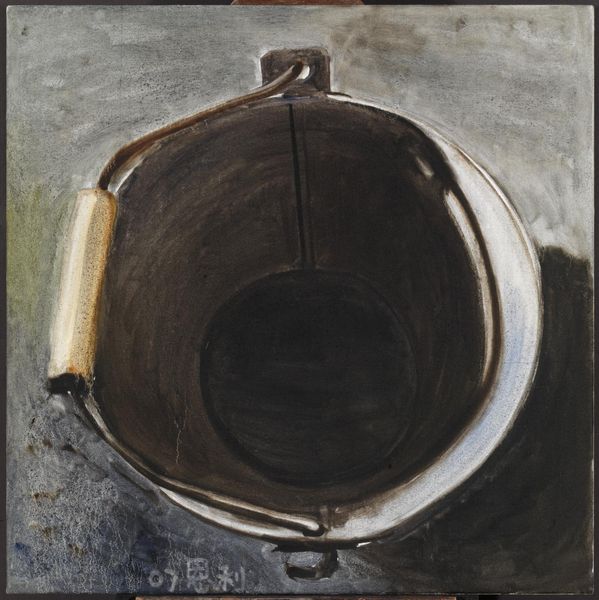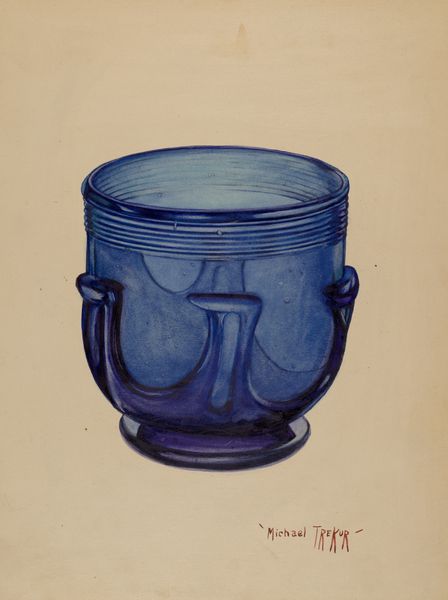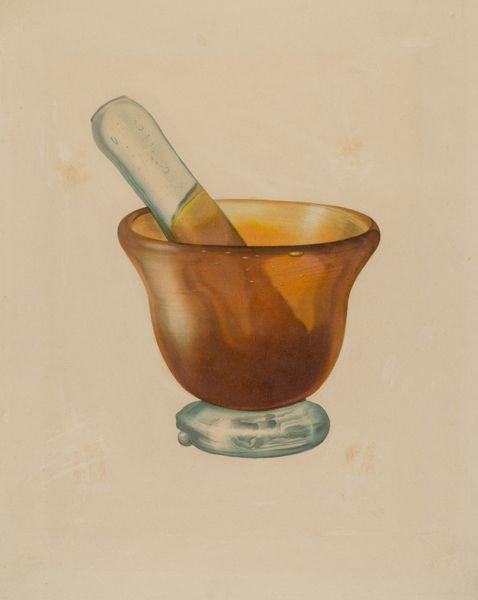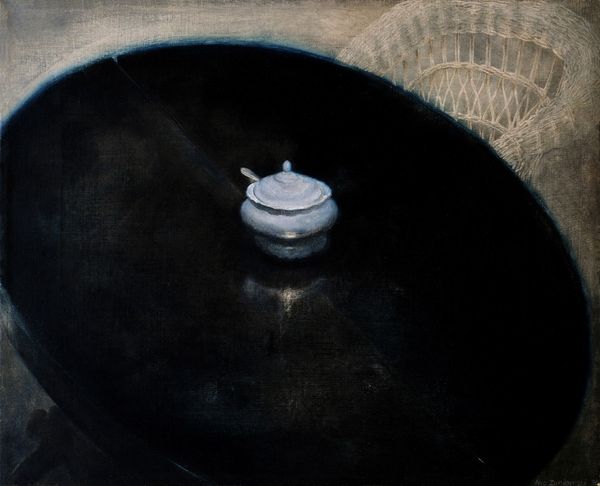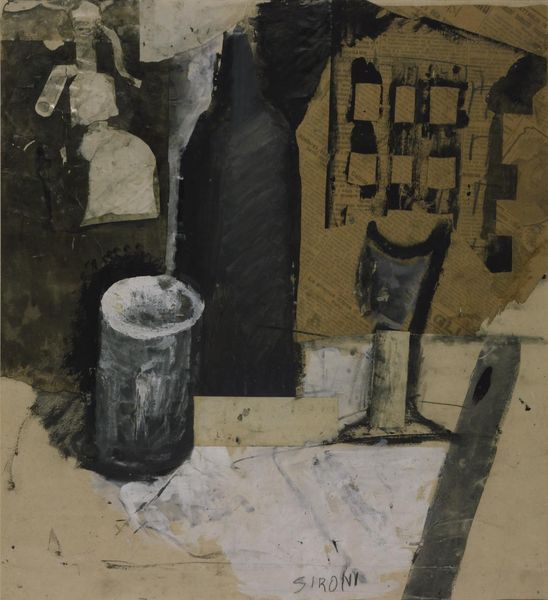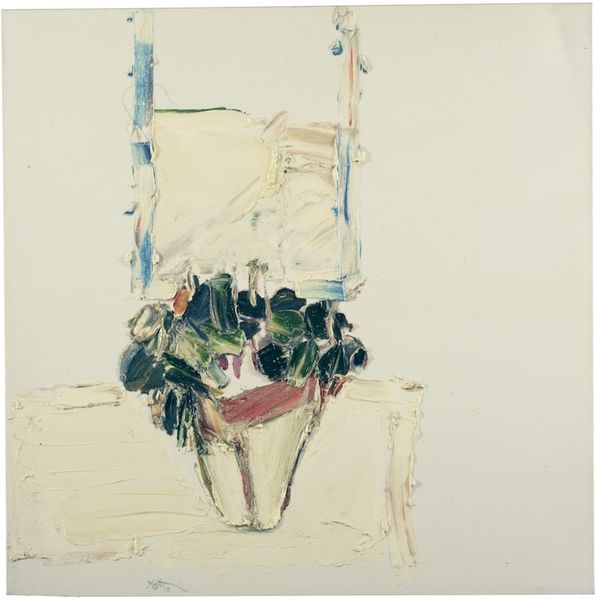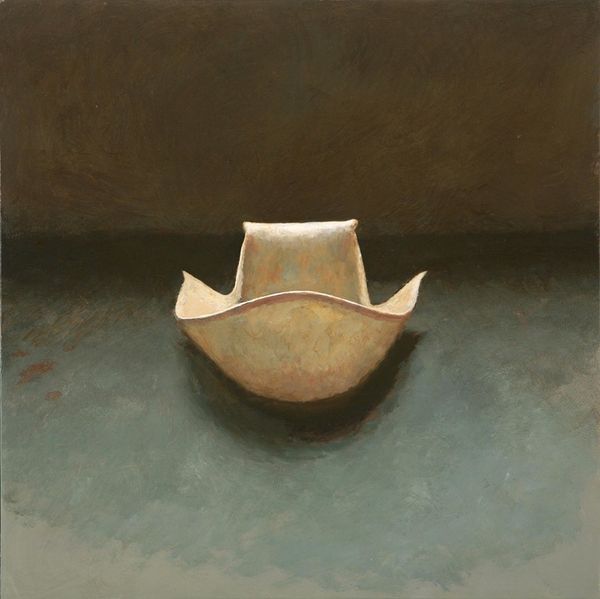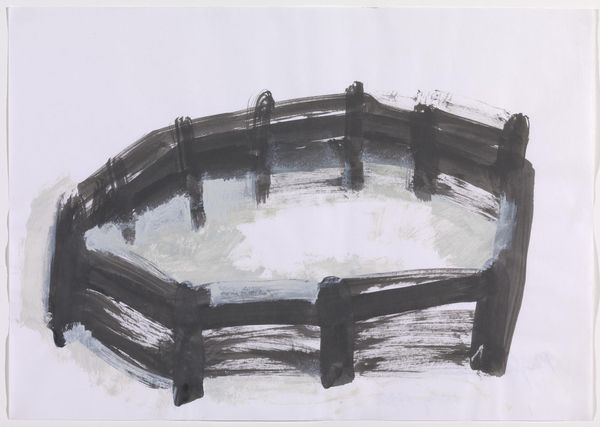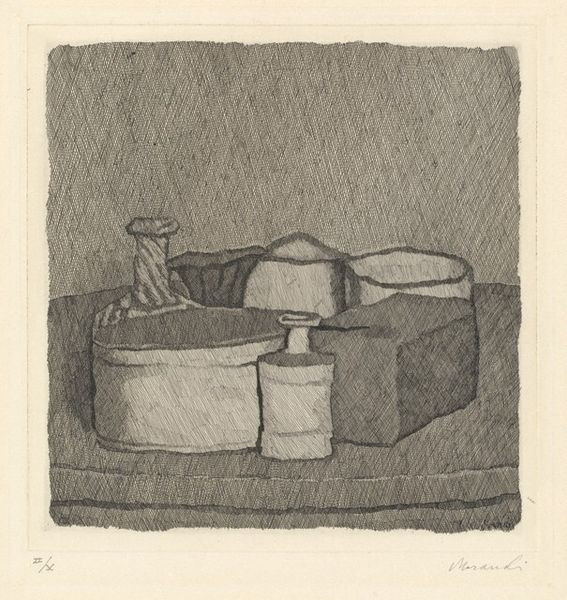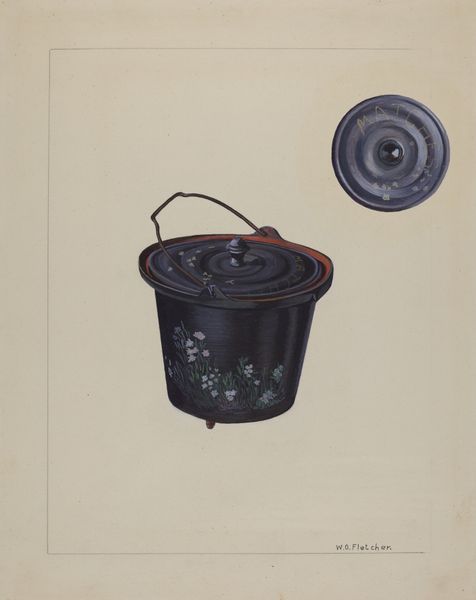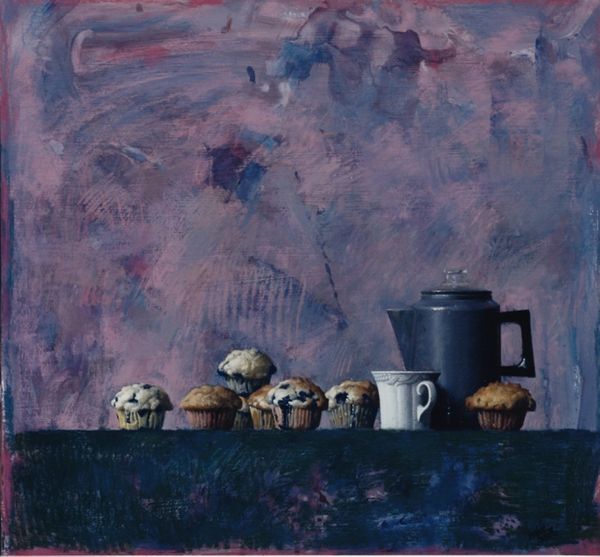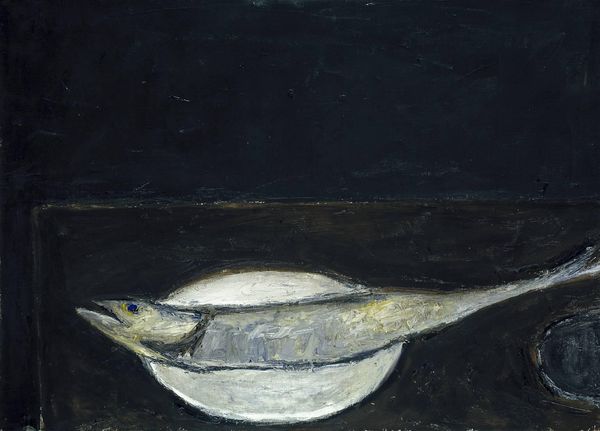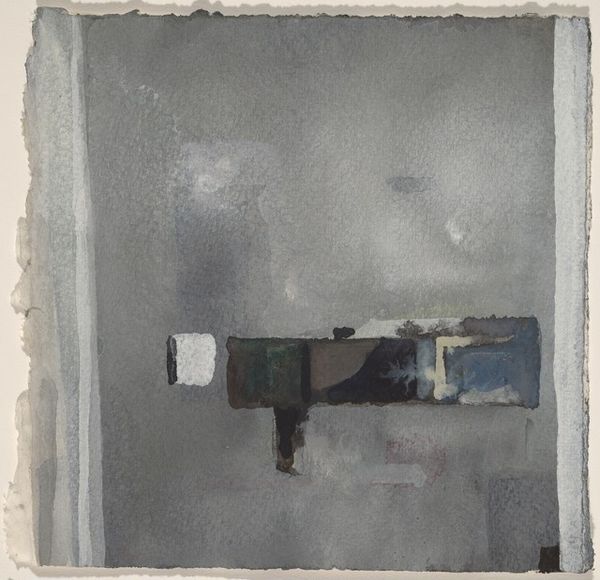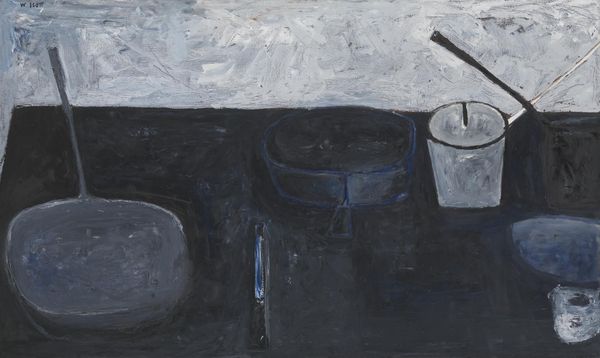
Dimensions: support: 994 x 994 mm
Copyright: © Zhang Enli | CC-BY-NC-ND 4.0 DEED, Photo: Tate
Curator: Enli Zhang, born in 1965, created this arresting piece, "Bucket 5," now held in the Tate Collections. I see the support measures nearly a meter square. What is your first take on it? Editor: Stark. The near monochrome palette—silvers, grays, dark blues—renders the mundane somehow monumental and emotionally loaded. It's a charged emptiness. Curator: Indeed. Consider the bucket as a signifier of labor, particularly within China's rapid industrialization. It brings forth notions of the worker, the peasant, their place within the socio-economic framework. Editor: Absolutely. The bucket, throughout history, is a vessel, both literally and symbolically. It represents sustenance, potential, and even collective effort. Think of its ritualistic uses, its appearance in folk tales. Curator: And its emptiness? Does that reflect a void, a lack, or perhaps a quiet resilience born from scarcity and political constraint? Editor: It could be read as an invitation to fill it, a symbol of hope amidst historical weight. Art becomes a way to actively engage with inherited social narratives. Curator: Precisely. Zhang's work offers an access point to wider dialogues surrounding identity, labor, and the weight of history on the individual. Editor: Ultimately, it evokes a powerful image, simple, yet rich in cultural and personal resonance.
Comments
Join the conversation
Join millions of artists and users on Artera today and experience the ultimate creative platform.
tate 6 months ago
⋮
Bucket 5 is one of an extensive series of paintings of buckets by Zhang Enli. Other works in Tate’s collection from this series are Bucket 3 2007 (Tate T13292) and Bucket 8 2007 (Tate T13294). Each one is a metre square and depicts a simple metal bucket, seen from different angles. In Bucket 5, the bucket is shown from above, with its handle resting to the left side of its rim. A light from the left casts a shadow on the inside of the bucket, which is empty, and to its right. As in the other paintings, the bucket fills most of the canvas and is set against a simply rendered background.
